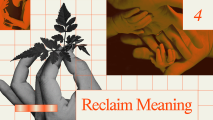Humans evolved to live in small groups — not just with blood-related kin, but with friends. Friends worked together to secure resources, seek justice, and protect each other. The more cooperative and supportive the group was, the more likely it was to survive and pass on its bond-seeking genes. The result is that we are wired to want close, enduring friendships.
So it is alarming that Americans are experiencing a “friendship recession.”
The startling decline of friendship
Modern living is tough on friendship.Unlike our ancestors who knew everyone in their tribe, most people now live in cities where the default is anonymity. As children and young adults, school may provide a social community. Indeed, the number of friends people have peaks around age 25, but then substantially drops around age 30, when work and the nuclear family take over.
Americans, especially those who are highly educated and high-earning, work longer hours and are more likely to move for work than ever before. Parents also spend twice as much time with their children than previous generations. This saps the ability to maintain close friendships.
The last decade has seen a startling further fall in the number and quality of friendships.
First, we have fewer close friends. According to the May 2021 American Perspectives Survey of over 2,000 adults, 12% of Americans report having no friends, up from under 3% in the 1990s. This data is mirrored in the United Kingdom, where the number of young adults who report having only one or no close friends jumped from 7% to nearly 20% between 2012 and 2021. These numbers are even worse for men, who tend to have more friends early in life but experience a steeper decline.
Second, we are spending substantially less time with the few friends we have. The American Time Use Survey, started in 2003, found that prior to 2013 people spent just under 7 hours per week with friends, and around 15 hours when including family, neighbors, and coworkers outside of work. But in 2014, people began reporting less social time. By 2021 the amount had nearly halved: We’re now spending less than 3 hours per week with close friends and 10 hours with all companions.
It is not surprising, therefore, that even before the COVID pandemic lockdown, loneliness rates were increasing. One study found that as of 2019, around 20% of Americans reported feeling lonely. And COVID made all these trends worse: A recent meta-analysis of over 30 studies and 28,000 older adults found that nearly 30% felt lonely.
Loneliness is deadly
Though friends may not help hunt mammoths or fight off attacking tribes anymore, they continue to support our economic success, well-being, and survival.
People without good friends die younger. A meta-analysis of 70 independent studies found that feeling socially isolated and lonely reduced longevity as much as severe obesity or smoking 15 cigarettes a day. A study of over 2,800 nurses diagnosed with breast cancer found that those without close friends were nearly four times more likely to die from their cancer.
Being alone causes obstacles to look more daunting, literally. One line of studies, for example, found that people assess hills as more steep when they are alone compared to when they are with a friend. When real-life obstacles hit, lacking friends may mean you don’t have a ride to the doctor’s office, an advocate, or a shoulder to cry on.
Finally, being lonely just feels bad. When around friends, your brain releases “feel-good” neurotransmitters like dopamine and serotonin. When you feel lonely, your brain pays more attention to negative things, like social threats and rejection. Feeling socially excluded activates the same brain regions involved in physical pain. In fact, loneliness predicts pain, fatigue, and depression.
Making friends 101
Science has yet to develop a step-by-step guide to making friends. But it does provide some good suggestions.
First, don’t get overwhelmed by thinking that you need dozens of close friends. Around three is probably enough to buffer against stress and improve well-being, and some psychologists suggest that around five is the limit for “shoulder-to-cry-on” closeness.
Second, realize that making friends will take multiple interactions over time. Unlike family relatives, developing and maintaining friendships requires sustained contact. One famous study found that a top predictor of friendship formation was merely how close people lived together (and by extension how often they saw each other), regardless of shared interests or other personal factors. Another recent study estimates that at least 11 interactions over five months are needed to solidify a friendship.
Third, because repeated contact is important, consider joining an organization or activity that meets regularly. Religious attendance and volunteer work, for example, have been shown to improve well-being, in part because they facilitate social connections.
Fourth, given that this will be a commitment, be a “thoughtful shopper.” Focus on people you really connect with. We are drawn to people like ourselves — that is, those who are of a similar education level, age, and occupation and with whom we have shared interests. But don’t rule out getting to know people outside your typical social circle. A study of Chinese adolescents, for example, found that making friends from different neighborhoods boosted well-being, especially for men.
Finally, as you spend time together, sprinkle in some self-disclosure. Sharing information about your experiences, thoughts, and beliefs boosts perceived empathy and warmth. In turn, this leads potential friends to share more about themselves and to like you more. (Just don’t overdo it: Disclosing highly intimate information early on or constantly referencing yourself can backfire.)
If you are among the millions of adults suffering from a personal friendship recession, don’t fret. There are likely many others also in need of a good friend, and with some effort you can find each other. In the meantime, don’t forget to enjoy your weak ties too. Social interactions with mere acquaintances or even strangers — say, chatting with coworkers at a meeting or random passengers on the bus — can have a surprisingly large positive impact on our well-being.
This excerpt was reprinted with permission of Big Think, where it was originally published.






